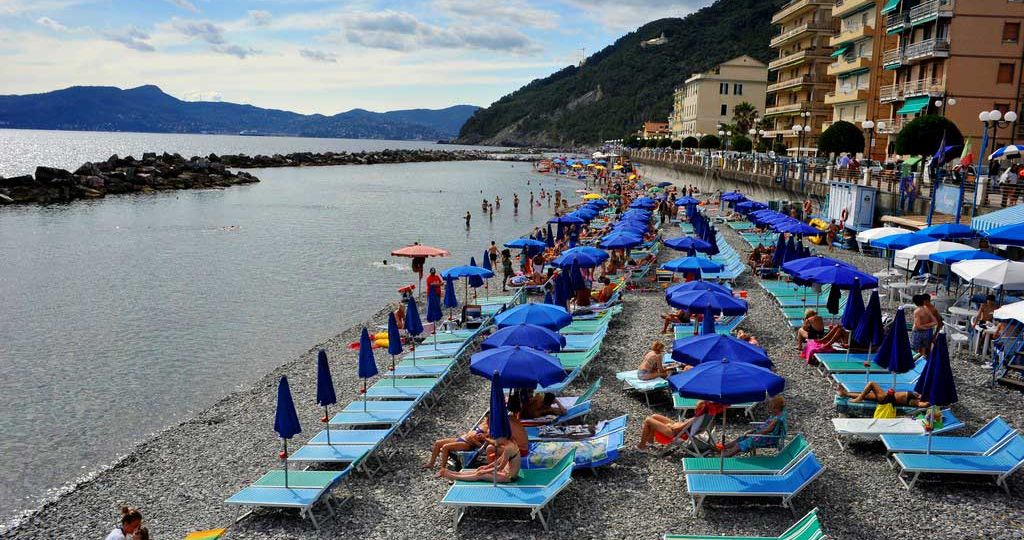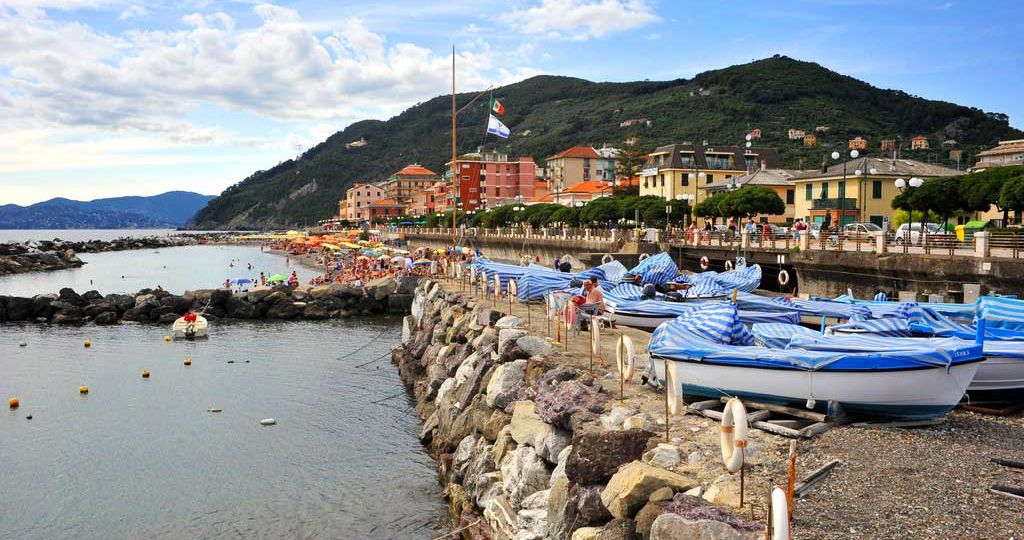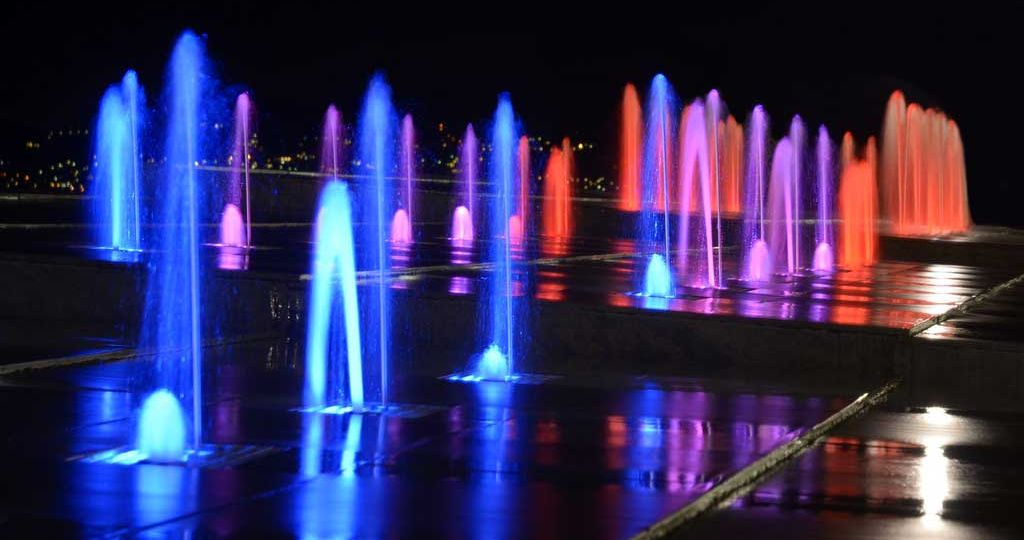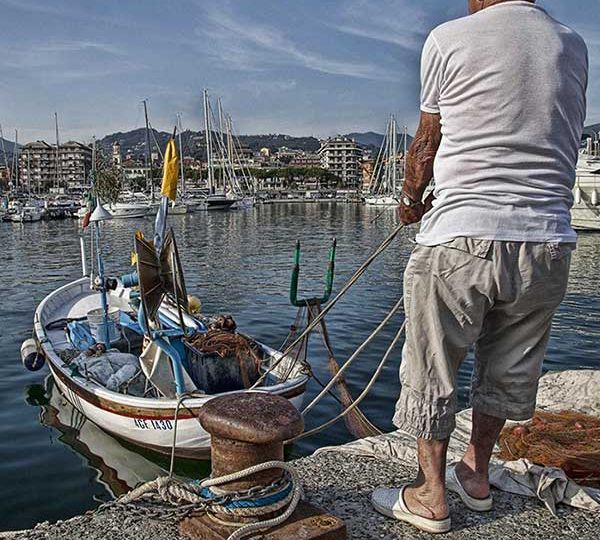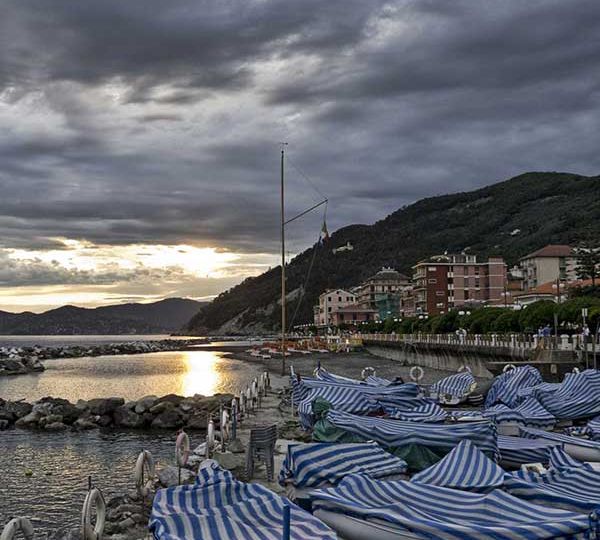The Port
The Port is perfectly integrated into the urban fabric, four steps from the “center” with streets dedicated to commercial activities but rich in historical tradition, culture and tourism. The Chiavari Marina is a prestigious tourist base in the Tigullio tourism system, just a few miles from the pearls of nautical tourism – Portofino, Santa Margherita, Cinque Terre – and the most popular destinations in Tuscany, Sardinia, Corsica and the French Riviera. The current structure, which houses more than 500 boats, has increased its capacity with the expansion known as the West Descent, where there are 151 additional berths between 8 and 24 meters, as well as 107 parking spaces and 80 covered gareges, offering all the most modern services related to the use and maintenance of your boat. Urban furnishings, improvements to port and beach access, improved sanitation facilities and new fuel distribution system have been completed. It is also possible to walk the panoramic promenade that connects the seafront with the new area of the Tourist Port.
The Marina of Chiavari and activities for sailors are managed by the Company Marina Chiavari. The Passeggiata Mare overlooks the Chiavari Marina and stretches for about 2 km along the bathing beaches of Chiavari. The beaches below are “inhabited” in the summer season by bathing establishments equipped areas and access to completely free beaches. There are also areas designated for dogs. The coastal rock barriers make the bathing environment accessible and safe for families and children. Along the promenade you will find shops, pizzerias, restaurants, bars, ice cream parlours, and free recreational spaces for all ages — to be enjoyed in the open air year-round.
The Seafront
The seafront begins at Largo Mario Ravenna, where the main central thoroughfare, Corso Garibaldi, ends. It is marked by a towering bronze monument dedicated to Cristoforo Colombo, a 1935 artwork by sculptor Francesco Messina. The Marina of Chiavari, located near the Columbus Monument, is easily accessible from the railway station. It is just a few miles away and around 30-minute train ride from both Portofino and the Cinque Terre. Its nine docks and two piers can accommodate over 450 boats.
During the summer, tourist ferries connect Chiavari to other renown destinations in Eastern Liguria: Portofino, San Fruttuoso, Cinque Terre, and Porto Venere.
The charming Seafront promenade begins in the east and takes on various names, including Lungoporto Don Luigi Giussani, Lungomare ‘Buba’ Scala, and Terrazza Conte Giuseppe Ratto. Stretching for around 2 km, the promenade offers views of the beach and the panoramic landscape, with the Mount of Portofino visible on the horizon.
Beyond the Marina, a stretch of beach invites visitors to take a walk along the sand and discover the dune vegetation that populates some of the dune-beds. A walk between what would be – in non-anthropized conditions- the spontaneous psammophilous vegetation (sand-loving plants) of the Mediterranean coastal dunes.
As visitors continue along the promenade, they will pass a series of small beaches and calm, crystal-clear water pools, separated from the open sea by a series of rock jetties, offering a safe bathing experience even on days when the sea is mildly choppy. Outside of summer, these small beaches remain deserted and quiet. Visitors can relax on the sand, enjoying the sun, the breeze, and the sea in complete safety. They may even share the space with peaceful seagulls or cormorants perched on the surrounding rocks, their wings spread wide.
During the summer, the very same beaches come alive with vibrant colours, as rows of beach umbrellas line the shore.
On the hillside of the promenade, a series of benches, shaded by pittosporum and palm trees, offers respite from the sun. Visitors can sit, rest from their walks, enjoy a snack or lunch, savour an aperitif with a view on the Mount of Portofino, at the nearby bars and restaurants.
The promenade ends to the west, connecting to Corso Valparaiso (formerly Via Olearia, later Corso al Cantiere) at Piazza Davide Gagliardo, once known as Ciassa di Barchi (the square of boats), in the heart of the Scogli neighbourhood, where the Blue Flag flies. Today, this is an evocative place with its low, colourful buildings. In the past, it was a land of rocks, orchards, and shipbuilding businesses.
The Gotuzzo Shipyards operated in this area from the early 19th century until 1935, with three generations of master shipbuilders passing down their expertise in the construction of over 120 large sailing ships. The last great ship launched was the schooner Fidente in 1922, as told by the sundial adorning the seafront facade of the last building on Corso Valparaiso, “Casa Gotuzzo”. The sundial also displays the wise maritime adage: “Chi g’à da fa camin o deve ammià o témpo e o bastiménto” (before setting your sail check the weather and the vessel).
After the 1930s, with the end of the heroic age of sailing, the square became a fishermen’s neighbourhood and was renamed Ciassa di Pescöi (Fishermen Square).
Casa Gotuzzo housed the “Tommasino Andreatta” Maritime Museum for several years before it was relocated to San Colombano Certènoli in Val Fontanabuona, and later to the “Leone” Barracks in Chiavari. The museum showcases an extraordinary collection of artifacts reflecting the culture, work, and maritime traditions of the Tigullio district, as well as the broader relationship between men and the sea.
Continuing beyond the new residential area of Scogli, Via Preli leads to the Torre Fara, an excellent example of rationalist architecture that has recently been revived after years of neglect.
Visitors can continue their walk along Via Preli to the gates of Villa Piaggio, beyond which begins the wild, truly Ligurian landscape of the Collina delle Grazie, covered by a dense Mediterranean scrub of holm oaks and shrubs. At the top, the Sanctuary of Nostra Signora delle Grazie towers over the landscape, a renowned site of art and faith, as well as an important stop along the Chiavari hiking network.



